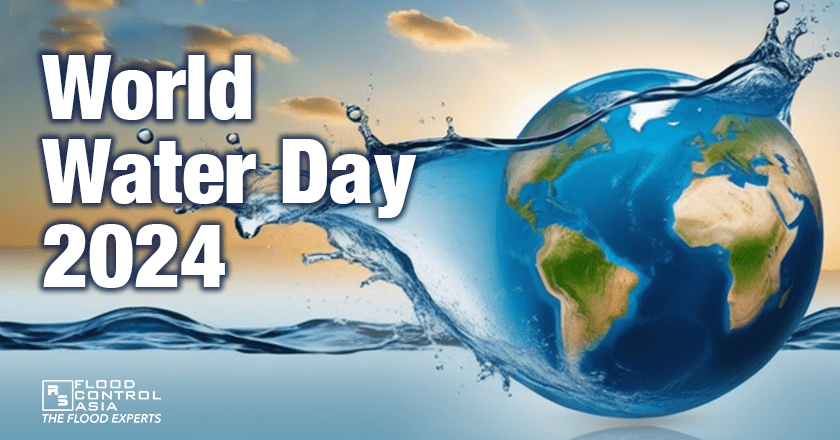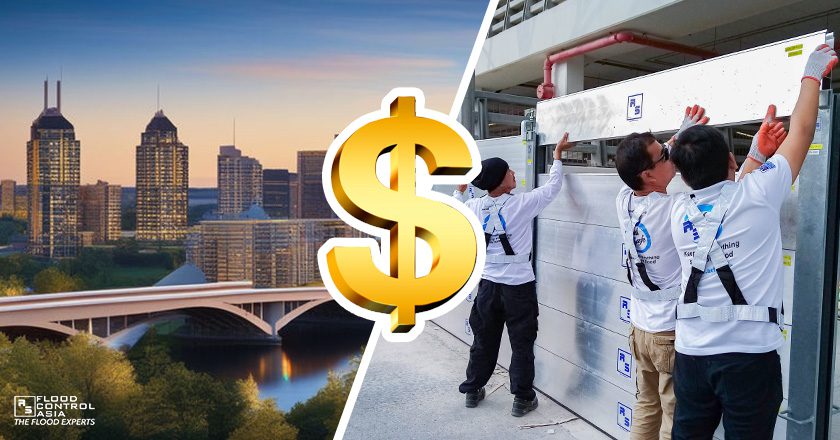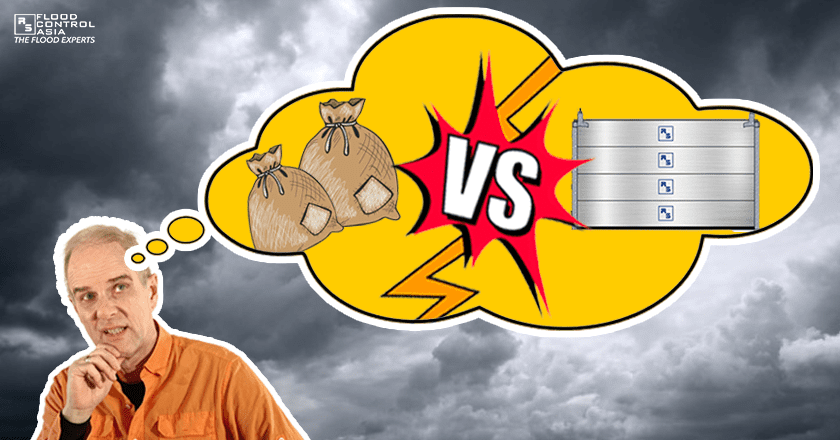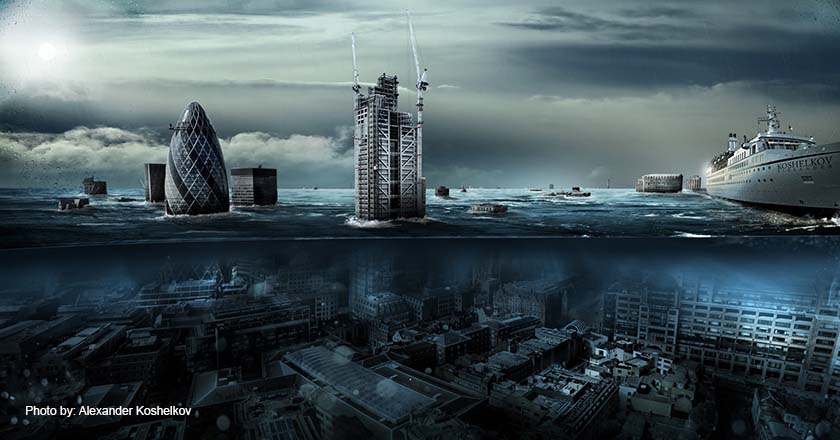The Global Fight against Climate Change: Know it and Act on it!
April 6, 2018 | Created by: Andreas Klippe | Comments
In our previous flood safety tip, we talked about the United Nations’ (UN) concern on climate change and the Paris Agreement.
I understand that putting climate change in a global context is something that needs further elaboration. What I mean is, how sure are we that everyone understands the global effort to stop climate change?

Are we aware that the United Nations are busy working to prevent the rise of global temperature? Are we even aware that the Paris Agreement on Climate Change is just a part of the larger effort to save the earth?
Then, if many of us are not yet aware of the global effort to combat climate change, let me talk about the United Nations’ Sustainable Development Goals (SDG). These goals, which I think covers the most pressing needs of our modern times, includes climate change.
The 17 United Nations’ Sustainable Development Goals
Before I talk about climate change as tackled in UN’s SDG, let me talk about the SDG in general.

The goals were adopted by various countries in September 2015. These goals mirror the worldwide need to eradicate poverty, inequality, and — of course — environmental degradation.
The UN has set a period of 15 years for the attainment of these goals. Below are the goals, which are enumerated based on how the UN labels them:
- Poverty
- Hunger and Food Security
- Health
- Education
- Gender Equality and Women’s Empowerment
- Water and Sanitation
- Energy
- Economic Growth
- Infrastructure and Industrialization
- Inequality
- Cities
- Sustainable Consumption and Production
- Climate Change
- Oceans
- Biodiversity, Forests, and Desertification
- Peace, Justice, and Strong Institutions
- Partnerships
Looking at the list above, you can easily see that out of the 17 SDGs, at least 4 are directly related to environmental advocacies. Those are the goals 12, 13, 14, and 15. However, only the 13th Goal talks directly about climate change.
Let’s zoom in on the 13th Goal.
Focusing on the 13th Goal, this is what we can learn from the United Nations:
Climate change is a global challenge that does not respect national borders. Emissions anywhere affect people everywhere. It is an issue that requires solutions that need to be coordinated at the international level and it requires international cooperation to help developing countries move toward a low-carbon economy.
Reading from the above quote, we can conclude that the UN is calling on ALL countries to act against climate change. Now, the Paris Agreement that we repeatedly mentioned in our past flood safety tip is the most prominent global and collective response to call.
For here, we can already have a picture of how countries around the globe are looking upon climate change. They are not simply babbling slogans that urge people to go green. Instead, they are tackling this issue with concrete steps.
How concrete are these steps? Well, we can see that concerned global leaders, speaking collectively as the UN, explicitly included climate change in humanity’s 17 most pressing needs in the 21st century.
Then, those countries did something feasible to ease up global warming — they signed the Paris Agreement which aims to limit the rise of global temperature.
As much as the SDGs are concerned, the UN’s member-countries are not bound by whatsoever legal pronouncements. However, as responsible members of UN, and as trusted representatives of their people, governments around the world are expected to integrate the SDGs in their policies and decisions.
This makes climate change, a key factor to be considered when governments around the world make policies.
What are we expecting from the 13th Goal?
At the end of the day, our understanding of the global effort against climate change will be incomplete if we do not know what the UN’s “success indicator” for the 13th Goal.
From the UN’s official website for the SDG, here are the targets that each country must achieve by 2030:
- Strengthen resilience and adaptive capacity to climate-related hazards and natural disasters in all countries;
- Integrate climate change measures into national policies, strategies and planning;
- Improve education, awareness-raising and human and institutional capacity on climate change mitigation, adaptation, impact reduction, and early warning;
- Implement the commitment undertaken by developed-country parties to the United Nations Framework Convention on Climate Change to a goal of mobilizing jointly $100 billion annually by 2020 from all sources to address the needs of developing countries in the context of meaningful mitigation actions and transparency on implementation and fully operationalize the Green Climate Fund through its capitalization as soon as possible; and
- Promote mechanisms for raising capacity for effective climate change-related planning and management in the least developed countries and small island developing States, including focusing on women, youth and local and marginalized communities.
What is your responsibility as an individual?
As an individual, where do you see yourself in these specific targets?
I understand if you cannot see yourself contributing to these targets. After all, they were crafted for world leaders. Just look at the terms used: national policies, institutional capacity, and developing states, etc.
However, it’s common sense that when the higher-level management starts working on a strategy, the lower-level must initiate a parallel action. This kind of cooperation will help both the governing bodies and the governed achieve success.
So, as an individual, what can you do? As a flood specialist, here are some of my suggestions:
1. Broaden your knowledge about climate change.
Though we hear about it every day, we cannot consider ourselves experts on climate change mitigation. It’s best that we study it either as an individual or as a small group.

2. Connect and learn with people who share the same goal of fighting global warming.
As I’ve said above, it’s best if you’ll learn more about climate change either as an individual or as a small group. Now, for obvious reasons, learning with a group is better. The Asian Center for Flood Control is an excellent example of a private group/institution that helps people learn about climate change and adaptation strategies. You can check its Facebook profile here.
3. Work against climate change from your home.
Of course, the basic unit of society is your family, so adopting environment-friendly measures in your home is a great way to contribute to UN’s 13th Goal. Here are some simple ways to make your home greener: segregate wastes, avoid using disposable plastic wares, start making a compost pit, conserve electricity and water, and plant greens in your yard.
When you look at these strategies, you’ll realize that fighting climate change from one’s own home starts in two things: DISCIPLINE and CREATIVITY.
4. Adopt effective protective measures in your homes.
While we deal with climate change, we also have to deal with its effects.
Now, we cannot deny that flooding is a major offshoot of climate change. So, here I am again with my usual spiel: protect your assets, your homes, and your loved ones against flooding!
We cannot afford to wait for the full reversal of climate change. We have to do something that will protect our families NOW. What’s preventing you from making your homes and businesses safe from flooding? If you’re looking for an effective flood protection, then look for the one that has been protecting thousands of lives for 30 years in 2020.
Let’s sum it up!
We’ve finally discovered what the world as a whole is doing to stop global warming. We’ve also talked about the targets of each country based on the 13th Goal (eradicating climate change). Lastly, we have talked about how individuals can contribute to this collective, massive effort against global warming.
So, to sum it up, the whole world is moving towards a greener, safer future.
Now, the decision to join this exciting effort is yours. Decide now and be protected against calamities!






